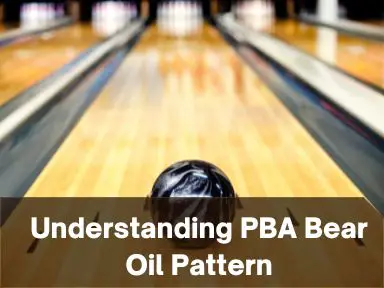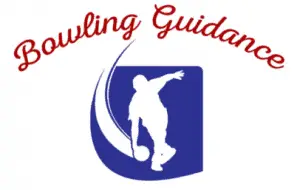
The PBA Bear oil pattern is one of the most challenging of the PBA Animal patterns. But is it impossible to win on this pattern? Definitely, not. Like PBA Shark the Bear is also tamable. The Bear oil pattern reflects the legacy of the U.S. Open (bowling). That’s why you need to know about some of the most important things about this pattern before you release your ball on the lane. So what are the strategies to follow to play on this particular oil pattern? How to win your game against all odds? Keep on reading, my friends, I have come prepared with all the information regarding this PBA sports pattern.
What is the PBA Bear oil pattern?
The Bear oil pattern by the Professional Bowling Association (PBA) is 41 feet in length with a flat 1 to 1.9 ratio. So it’s going to be very flat from gutter to gutter with very little taper, meaning some parts of the lane is going to have less oil than other parts. Oil per board can be 50 or 40 uL (with the Ikon lane machine).
Out of the 8 Animal Patterns, the PBA Bear oil pattern is the toughest. As an advanced bowler, if you can score a 200, you’re doing pretty good. That’s why you will need tons of practice. The official PBA pattern sheet indicates the total amount of Forward Oil is 18.10 mL and Reverse Oil is 11.75 mL. So the Total Volume Oil is 29.85 mL. This is not a great pattern for your bowling average!
With the Ikon 40 uL pattern, the total amount of Forward Oil is 14.48 mL and Reverse Oil is 9.4 mL. So the Total Volume of Oil is 23.88 mL. In the official version, The Total Boards Crossed in this pattern are 597 Boards (362 Boards- Forward and 235 Boards- Reverse). The conditioner and transfer type are customizable.
How to attack the PBA Bear oil pattern?
The PBA Bear oil pattern is an ultimate test of a bowler’s skill. In order to maximize your success rate on this pattern, especially if you’re bowling in a league, you should break down a certain area and then move a bit left to that area for the breakdown. If you don’t have the opportunity to break down the pattern and witness a lot of friction, you have to be very straight with your shot. This means if you play around the second arrow, your breakpoint should still be around the second arrow, which means your angle is going to be very close.
What I find unique about this pattern is that it gets easier once it breaks down. On the fresh pattern, you’re gonna struggle a bit more. But it is still pretty tough because when you get into the middle part of the lane, you’ll still notice that flat oil distribution on the pattern. So you have to create a wider launch angle going into the second arrow. So when you move further left, you still have to throw your ball a little bit further away from you, but not too far away.
The more you move left on the Bear oil pattern, the more you’re gonna throw your ball into the left side of the six-pin. However, left-handed bowlers are gonna throw it into the right side of the four-pin.
Since the pattern is very flat, you should break down the lane around the first and the second arrow. To do that, you should over-surface by using a ball that is gonna scrub off some of the oil from the lane.
By drying out the front part of the lane, and driving a bit more of the down lane, you can get your ball into a roll. It is important on the Bear oil pattern because the back part of the lane is going to be hard to control because of how your ball will react in the front lane.
Ideally, for right-handers, your ball’s exit is gonna be somewhere around the (41-31=10) 10 board, according to the ‘Rule of 31’. But you can move further inside and play straighter and still manage to hit the pocket. For being 41 feet, you should expect your breakpoint from board 7 to board 12.
Generally, you should keep your angles fairly close on this pattern, especially when you are playing straight because the flat part of the pattern prevents you from curving your ball. If you throw it towards the gutter, it’s just gonna stay there and might not even hit a single pin. When you are playing straight and not hooking the ball, you need to stay behind the ball the whole time. You are never going to get around it on this kind of flat pattern. And, do not forget to focus on controlling the backend of the pattern.
Which bowling ball is best for this pattern?
So what kind of bowling ball do you think will save you from the Bear attack? A bowling ball with a high flaring symmetrical core and a matte/sanded coverstock. You shouldn’t go for an asymmetrical ball unless you are planning to move really far left or your symmetrical ball isn’t hooking much at the back part of the lane as you want it to.
When you’re using a symmetrical bowling ball, no need to bring your weaker ball, not even urethane balls. If you intend to use asymmetrical balls, it’s best to use a somewhat weaker ball. If it is a Hammer Black widow Urethane you have got and you should sand it a bit more, that will work fine on this pattern. For a stronger ball, you can use the Storm Alpha Crux or the Columbia 300 Melt Down.
If you’re pretty sure you are gonna use symmetrical bowling balls, here are some of my favorites— Storm Phaze II, Storm Axiom, Ebonite Game Breaker 3, and Storm IQ Tour. Do keep in mind— you want bowling balls that have solid or hybrid covers. Pearl balls are gonna wiggle on the Bear oil pattern because there’s so much oil on the front lane. Keep the cover finish between 500 to 1000 grit.
Conclusion
That’s my two cents for the PBA Bear pattern. Taming the Bear is totally possible! Just follow the instruction I have added in this article and you will do just fine. Practice is the key. Work on how you can break down the pattern a bit at first. Other than that, with the right piece of equipment, you can be unstoppable. Good luck with your future endeavors!

